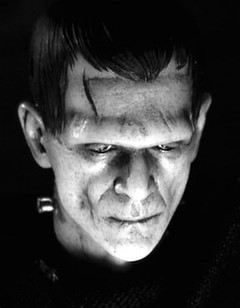 On New Years Day 1818, Mary Shelley’s Frankenstein first appeared in a press run of 500 copies. Though published anonymously, readers at the time assumed it was written by her husband, Percy Bysshe Shelley.
On New Years Day 1818, Mary Shelley’s Frankenstein first appeared in a press run of 500 copies. Though published anonymously, readers at the time assumed it was written by her husband, Percy Bysshe Shelley.
That incorrect assumption proved to be only the first of many associated with Shelley’s greatly misunderstood novel.
A few years ago, the journal Dissections published “The Grave Misunderstanding,” an essay in which I address one of those assumptions. Today, in honor of the novel’s bicentennial, I’m reposting that essay here. If it sparks your interest, you might want to check out the novel.
You will be glad you did.
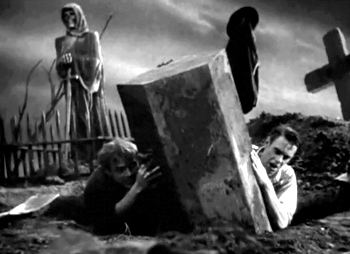
The Grave Misconception:
The Textual Origins of Mary Shelley’s Monster
First published in:
Dissections:
A Journal of Contemporary Horror
University of Brighton
31 March 2013
A few months ago, a monster came to town. It started as a small disturbance south of Jamaica and grew as it headed north, picking up speeds and moisture, and finally developing into a hurricane as it ascended the eastern seaboard of the United States. Along the way, it earned the name Sandy, but that changed when it veered inward and merged with another storm blowing from the west. After that, the monster earned a new name: Frankenstorm.
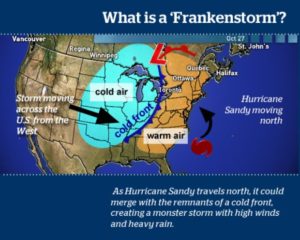 I spent some quality time with that storm while driving north to The World Fantasy Convention in Toronto, plowing through its driving rain as I followed its path through Pennsylvania and on into Ontario – and all the way I heard people on the radio calling it Frankenstorm. Why? Because it was no longer just one storm. It was a collection of storms, woven together to form one raging entity – sort of like the Frankenstein monster, right?
I spent some quality time with that storm while driving north to The World Fantasy Convention in Toronto, plowing through its driving rain as I followed its path through Pennsylvania and on into Ontario – and all the way I heard people on the radio calling it Frankenstorm. Why? Because it was no longer just one storm. It was a collection of storms, woven together to form one raging entity – sort of like the Frankenstein monster, right?
Actually, no.
Not if we’re talking about the creature as presented in Mary Shelley’s novel. That creature, as a close investigation of the text will show, is not a combination of parts. It is an organic whole created through a mysterious process that is never fully explained in Victor Frankenstein’s story. And yet, the misconception – that Victor robbed graves for parts that he stitched into a gigantic patchwork man – seems to have taken on a life of its own.
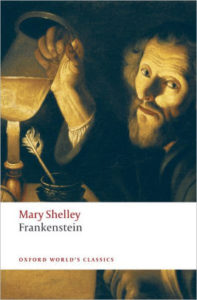 Consider, for example, the back-cover synopsis of the Oxford World’s Classics edition of Frankenstein, or a Modern Prometheus, which refers to the novel as “a story about a student of natural philosophy who learns the secret of imparting life to a creature constructed from bones he has collected from charnel houses.” Unfortunately, such misconceptions seem to be everywhere. Indeed, some esteemed readers and critics seem to be under a similar impression, which means that it might be time to return to the text and take note of the true nature of Shelley’s monster.
Consider, for example, the back-cover synopsis of the Oxford World’s Classics edition of Frankenstein, or a Modern Prometheus, which refers to the novel as “a story about a student of natural philosophy who learns the secret of imparting life to a creature constructed from bones he has collected from charnel houses.” Unfortunately, such misconceptions seem to be everywhere. Indeed, some esteemed readers and critics seem to be under a similar impression, which means that it might be time to return to the text and take note of the true nature of Shelley’s monster.
The roots of the grave misconception lie in Victor Frankenstein’s early accounts of the monster’s creation. Relating his story to Walton, he explains how he “was led to examine the cause and progress of [. . .] decay and forced to spend days and nights in vaults and charnel-houses” (pp. 51-52).
Clearly, he does spend time among the dead, but his primary reason for being there is to examine the process of decomposition, the inevitable decay of living matter that he wants to reverse. To cure death, he must first understand it.
Nowhere does he indicate that he hopes to assemble various pieces of decaying matter into a living creature. Even when he admits to taking some bone with him, it is so that he can continue his observations back at his workshop, not because he plans to assemble them into a creation. As he puts it: “I collected bones from charnel-houses and disturbed, with profane fingers, the tremendous secrets of the human frame” (pp. 54-55). Note the actions. He is probing and examining, not assembling, and we should keep these actions in mind when he later claims that “the dissecting room and slaughter-house furnished many of my materials” (p. 55). Materials for study, not assembly.
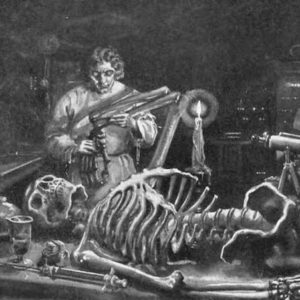 The most compelling indication that Frankenstein is not assembling his creation from scavenged materials comes after he has spent some time studying his collected pieces. It is here that he reaches the conclusion that “as the minuteness of the parts formed a great hindrance to my speed, I resolved, contrary to my first intention, to make the being of gigantic stature, that is to say, about eight feet in height, and proportionably large” (pp. 53-54). Thus, since human-size parts are too small to work with, he must “make” something larger, and although the means of this making is never revealed, the text suggests that whatever he is doing, it is not creating a patchwork man.
The most compelling indication that Frankenstein is not assembling his creation from scavenged materials comes after he has spent some time studying his collected pieces. It is here that he reaches the conclusion that “as the minuteness of the parts formed a great hindrance to my speed, I resolved, contrary to my first intention, to make the being of gigantic stature, that is to say, about eight feet in height, and proportionably large” (pp. 53-54). Thus, since human-size parts are too small to work with, he must “make” something larger, and although the means of this making is never revealed, the text suggests that whatever he is doing, it is not creating a patchwork man.
One must also wonder why Frankenstein would bother building his monster out of pieces in the first place. Why do all that stitching when he could simply animate an already intact corpse? Logic, as well as the text, suggests he is up to something else.
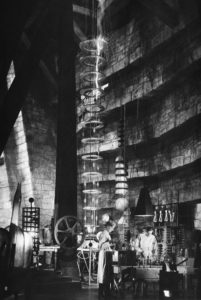 It is also worth considering the novel’s subtitle: A Modern Prometheus. The Prometheus here is not so much the pyrphoros who stole fire from the heavens, although that would seem to be the case from watching the antics of Henry Frankenstein in James Whale’s Frankenstein(1931) and Bride of Frankenstein (1935) [right]. Henry might use kites to steal lightning, but Victor does no such thing. Despite an early scene in the novel where he learns about the power of nature by pondering a lightning-struck tree, it is arguably the case that Victor does not employ any electricity in his creation process. The single use of the word “spark” (p. 57) in the novel’s creation scene is metaphorical, and his work on the mate later in the book includes no mention of electricity at all.
It is also worth considering the novel’s subtitle: A Modern Prometheus. The Prometheus here is not so much the pyrphoros who stole fire from the heavens, although that would seem to be the case from watching the antics of Henry Frankenstein in James Whale’s Frankenstein(1931) and Bride of Frankenstein (1935) [right]. Henry might use kites to steal lightning, but Victor does no such thing. Despite an early scene in the novel where he learns about the power of nature by pondering a lightning-struck tree, it is arguably the case that Victor does not employ any electricity in his creation process. The single use of the word “spark” (p. 57) in the novel’s creation scene is metaphorical, and his work on the mate later in the book includes no mention of electricity at all.
Instead, Victor is more of a plasticator, a shaper of lifeless (as opposed to dead) materials, a natural philosopher who “tortured the living animal to animate the lifeless clay” (p. 54).
 Finally, we should note that the first visual representations of Frankenstein’s monster show an organically formed creature. Consider, for example, the monster as performed by T. P. Cooke in the 1823 stage play Presumption, or the Fate of Frankenstein [pictured at left], or Theodor Von Holst’s frontispiece illustration for the novel’s 1831 edition [pictured below].
Finally, we should note that the first visual representations of Frankenstein’s monster show an organically formed creature. Consider, for example, the monster as performed by T. P. Cooke in the 1823 stage play Presumption, or the Fate of Frankenstein [pictured at left], or Theodor Von Holst’s frontispiece illustration for the novel’s 1831 edition [pictured below].
In both representations, the monster appears much as described in Shelley’s text: “His yellow skin scarcely covered the work of muscles and arteries beneath; his hair was of a lustrous black, and flowing; his teeth of a pearly whiteness” (p. 57).
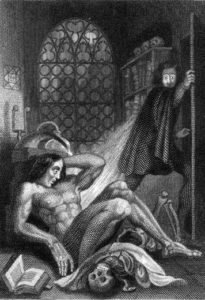 Nowhere in any of these images do we detect signs of scarring or stitching. The creature is a single, organic entity, with an outsized physique and intellect far exceeding that of a natural man. As such, I think Victor Frankenstein’s original creation poses a much more frightening adversary than the one most people think of when they hear the name Frankenstein. Moreover, I feel we do a disservice to the complexity of the source material when we accept the misinterpreted vision that is accepted as common knowledge today.
Nowhere in any of these images do we detect signs of scarring or stitching. The creature is a single, organic entity, with an outsized physique and intellect far exceeding that of a natural man. As such, I think Victor Frankenstein’s original creation poses a much more frightening adversary than the one most people think of when they hear the name Frankenstein. Moreover, I feel we do a disservice to the complexity of the source material when we accept the misinterpreted vision that is accepted as common knowledge today.
As for Frankenstorm, its makeup also seems to be based on a misconception. It wasn’t really a collection of isolated storms that stitched themselves together and became a monster, but a single entity, an organic whole spawned not by isolated weather patterns, but by the current state of global warming that some people still deny.
But that’s the topic of another essay.
Source
Shelley, Mary Wollstonecraft (1818) Frankenstein, or, the Modern Prometheus, ed. Joseph, M.K. (Oxford: Oxford UP), 1998.

Leave a Reply